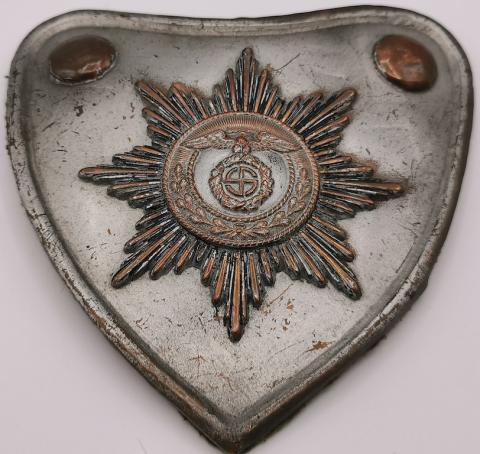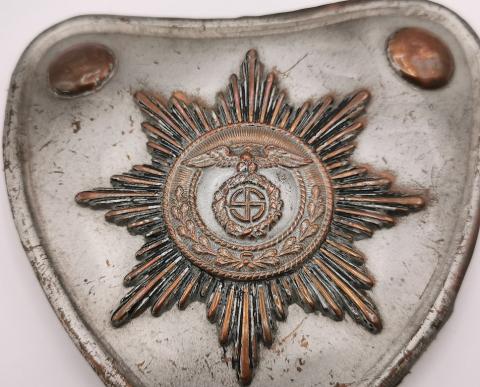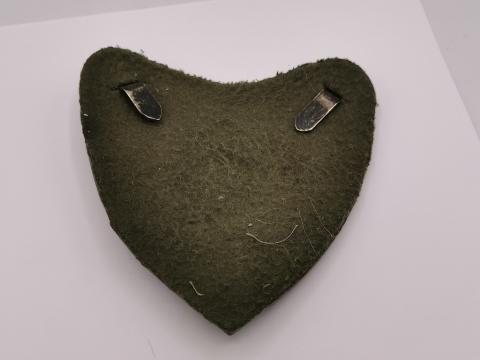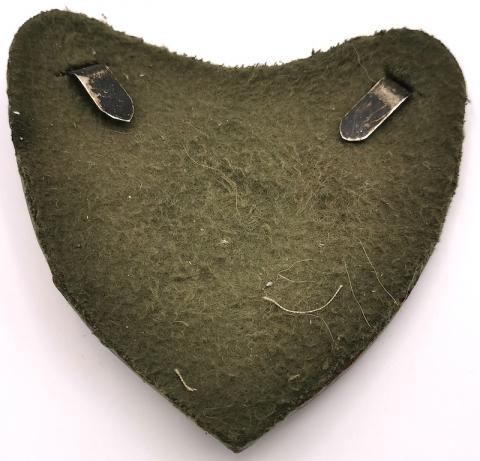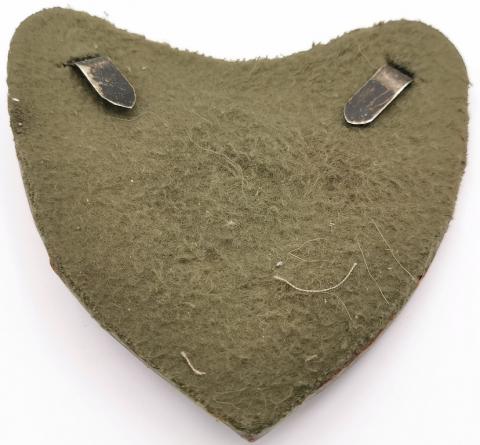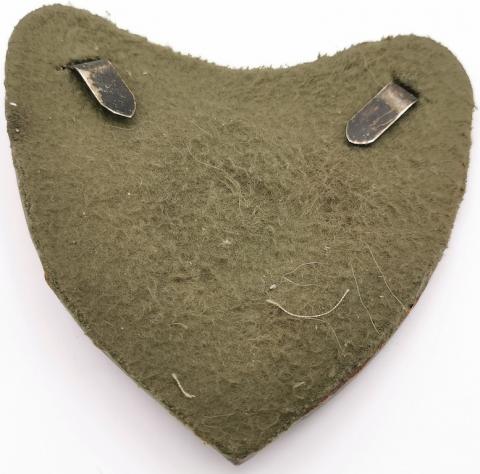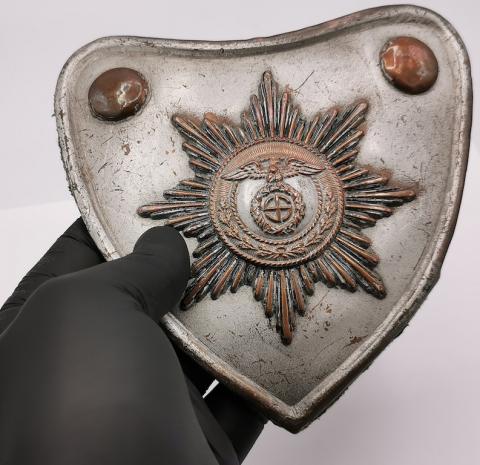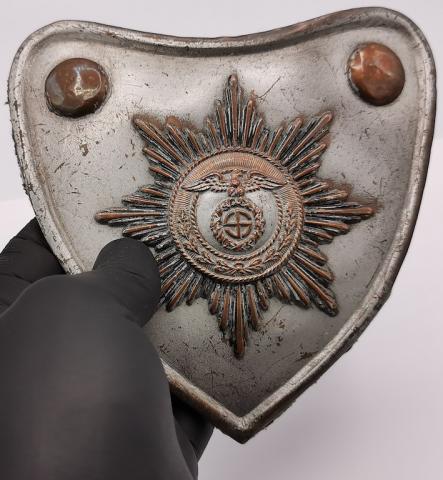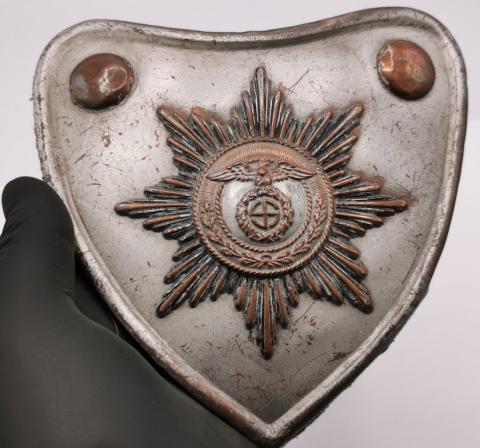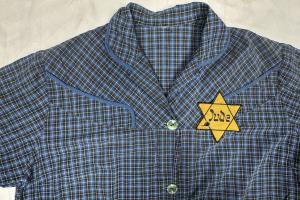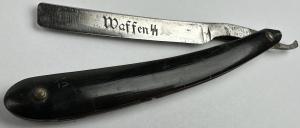FIRST MODEL NAZI EARLY SA / SS STANDARD UNIFORM BEARER’S GORGET
| List price(USD): | $295.00 |
| Price(USD): | $175.00 |
| You save(USD): | $120.00 |
FIRST MODEL NAZI EARLY SA / SS STANDARD UNIFORM BEARER’S GORGET
no chain
It was introduced prior to the Reichsparteitag rallies of August 1929 and was worn by all standard bearers of the SA and SS at that time, both those who carried the “Deutschland Erwache” standards and those who carried unit flags. It was worn with the brown shirt as well as with the four pocket uniform. The SA/SS gorget is a heart shaped plate
Gorgets were originally part of a knight’s armor during medieval times. Long after suits of armor were abandoned, the gorget continued to be used in many European armies as a form of military insignia. In the Imperial German Army until 1914, gorgets were worn as a special mark of distinction by certain elite units. Following WWI, German paramilitary and police organizations used gorgets for standard bearers, as insignia, and to denote personnel assigned special tasks. Following the Nazi rise to power, there was a vast increase in the number of uniformed organizations, and a variety of new gorgets were instituted for use by these civil, political and paramiliary organizations, as well as by the military. Standard bearers of most organizations, who were entrusted with carrying flags at rallies and in parades, wore gorgets. Other gorgets indicated assignment to guard or security forces. The military police personnel of the Wehrmacht and Waffen-SS had their own gorgets as a part of their uniforms, and were nicknamed “chained dogs” by the troops due to the chain used to suspend the gorget around the wearer’s neck. Because gorgets were never general issue to all personnel of any organization or military branch, they were manufactured in limited numbers, and are generally scarce to encounter today.

